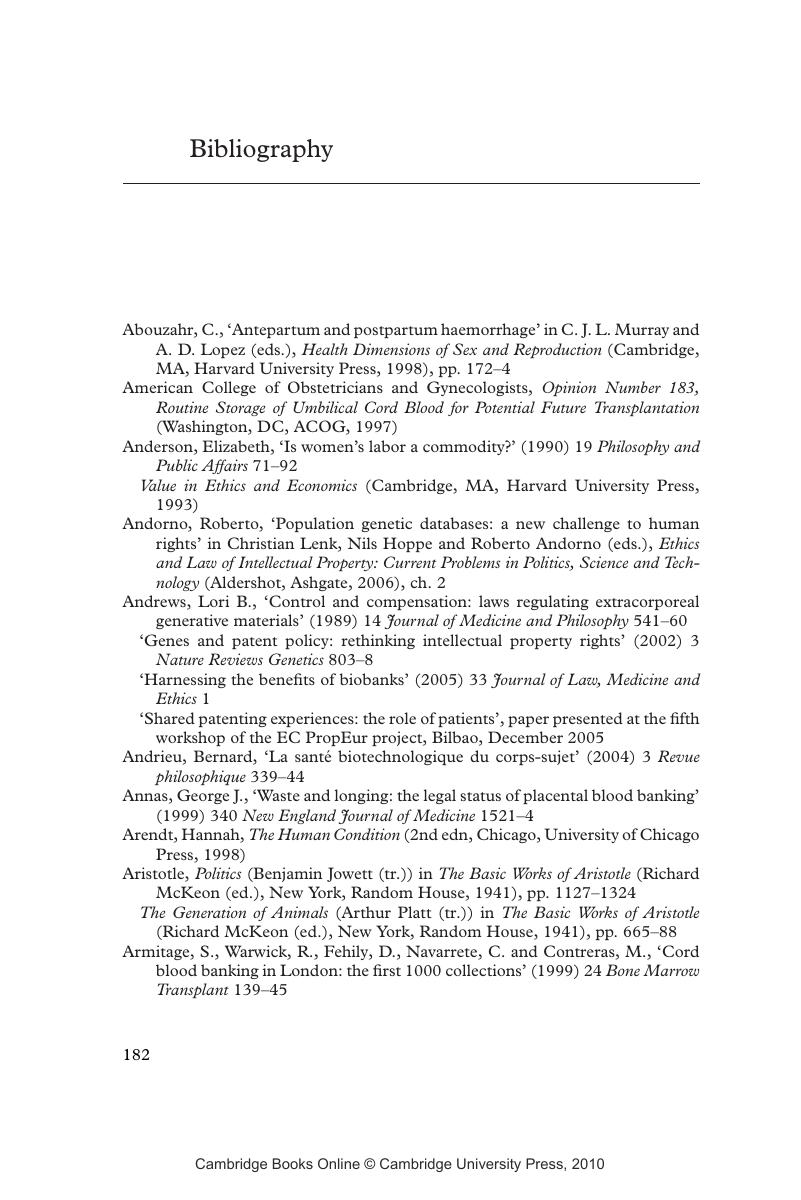Book contents
- Frontmatter
- Contents
- Acknowledgements
- Preface
- 1 Do We All Have ‘Feminised’ Bodies Now?
- 2 Property, Objectification and Commodification
- 3 The Lady Vanishes: What's Missing from the Stem Cell Debate
- 4 Umbilical Cord Blood Banks: Seizing Surplus Value
- 5 The Gender Politics of Genetic Patenting
- 6 Biobanks: Consent, Commercialisation and Charitable Trusts
- 7 The New French Resistance: Commodification Rejected?
- 8 Tonga, the Genetic Commons and No Man's Land
- 9 Afterword
- Bibliography
- Index
- References
Bibliography
Published online by Cambridge University Press: 15 December 2009
- Frontmatter
- Contents
- Acknowledgements
- Preface
- 1 Do We All Have ‘Feminised’ Bodies Now?
- 2 Property, Objectification and Commodification
- 3 The Lady Vanishes: What's Missing from the Stem Cell Debate
- 4 Umbilical Cord Blood Banks: Seizing Surplus Value
- 5 The Gender Politics of Genetic Patenting
- 6 Biobanks: Consent, Commercialisation and Charitable Trusts
- 7 The New French Resistance: Commodification Rejected?
- 8 Tonga, the Genetic Commons and No Man's Land
- 9 Afterword
- Bibliography
- Index
- References
Summary

- Type
- Chapter
- Information
- Property in the BodyFeminist Perspectives, pp. 182 - 199Publisher: Cambridge University PressPrint publication year: 2007

